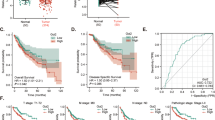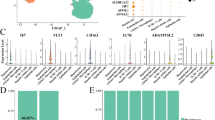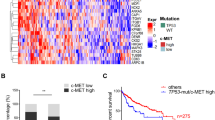Abstract
Sex disparity is a hepatocellular carcinoma (HCC) hallmark, demonstrating aggressiveness and mortality more frequently in men than in women. However, the components of its basis remain largely unknown. It was identified in HCC frequent loss of heterozygosity of general transcript factor IIH subunit 2 (GTF2H2), a potential estrogen pathway gene. GTF2H2 functions in nucleotide excision repair (NER) and basal transcription, but the function of GTF2H2 in cancer has not been described in depth. Here, it was identified that GTF2H2 inhibited growth and invasive mobility and induced apoptosis of HCC cells, which was up-regulated by estrogen-dependent estrogen receptor alpha (ERα) signaling. Mechanistically, in vitro estrogen-treated HCC models with GTF2H2 knockdown and over-expression showed estrogen-regulated GTF2H2 promoted NER of HCC genomic DNA and inhibited cell cycle progression, and down-regulated PAM/NF-κB pathway. Xenografted HCC mice models showed higher tumor progression of HCC with low GTF2H2 expression in ovariectomized female mice or male mice, but could be rescued by GTF2H2 over-expression, which was also observed in spontaneous tumor mice models. Clinical association analysis of HCC cases showed GTF2H2 expression was higher in female HCC, with correlation positively with ERα expression. Taken together, the estrogen-regulated GTF2H2 may be involved in the development and sex disparity of HCC by maintaining NER-related genomic stability and affecting PAM/NF-κB signaling pathway.

This is a preview of subscription content, access via your institution
Access options
Subscribe to this journal
Receive 50 print issues and online access
$259.00 per year
only $5.18 per issue
Buy this article
- Purchase on SpringerLink
- Instant access to full article PDF
Prices may be subject to local taxes which are calculated during checkout





Similar content being viewed by others
Data availability
All data generated or analyzed during this study are basically included in this published article (and its supplementary information files).
References
Rich NE. Changing Epidemiology of Hepatocellular Carcinoma Within the United States and Worldwide. Surg Oncol Clin N. Am. 2024;33:1–12.
Yue T, Xu M, Cai T, Zhu H, Pourkarim MR, De Clercq E, et al. Gender disparity and temporal trend of liver cancer in China from 1990 to 2019 and predictions in a 25-year period. Front Public Health. 2022;10:956712.
Haupt S, Caramia F, Klein SL, Rubin JB, Haupt Y. Sex disparities matter in cancer development and therapy. Nat Rev Cancer. 2021;21:393–407.
Toniutto P, Shalaby S, Mameli L, Morisco F, Gambato M, Cossiga V, et al. Role of sex in liver tumor occurrence and clinical outcomes: A comprehensive review. Hepatology. 2024;79:1141–57.
Li Y, Xu A, Jia S, Huang J. Recent advances in the molecular mechanism of sex disparity in hepatocellular carcinoma. Oncol Lett. 2019;17:4222–8.
Yun J, Kim YS, Heo MJ, Kim MJ, Moon A, Kim SG. ERalpha inhibits mesenchymal and amoeboidal movement of liver cancer cell via Galpha12. Int J Cancer. 2022;150:1690–705.
Lu Y, Tian N, Hu L, Meng J, Feng M, Zhu Y, et al. ERalpha down-regulates carbohydrate responsive element binding protein and decreases aerobic glycolysis in liver cancer cells. J Cell Mol Med. 2021;25:3427–36.
Jiang M, Jia K, Wang L, Li W, Chen B, Liu Y, et al. Alterations of DNA damage response pathway: Biomarker and therapeutic strategy for cancer immunotherapy. Acta Pharm Sin B. 2021;11:2983–94.
Pasqui A, Boddi A, Campanacci DA, Scoccianti G, Bernini A, Grasso D, et al. Alteration of the Nucleotide Excision Repair (NER) Pathway in Soft Tissue Sarcoma. Int J Mol Sci. 2022;23:8360.
Zhao Z, Chen GY, Long J, Li H, Huang J. Genomic losses at 5q13.2 and 8p23.1 in dysplastic hepatocytes are common events in hepatitis B virus-related hepatocellular carcinoma. Oncol Lett. 2015;9:2839–46.
Johannsdottir HK, Jonsson G, Johannesdottir G, Agnarsson BA, Eerola H, Arason A, et al. Chromosome 5 imbalance mapping in breast tumors from BRCA1 and BRCA2 mutation carriers and sporadic breast tumors. Int J Cancer. 2006;119:1052–60.
Walker LC, Marquart L, Pearson JF, Wiggins GA, O’Mara TA, Parsons MT, et al. Evaluation of copy-number variants as modifiers of breast and ovarian cancer risk for BRCA1 pathogenic variant carriers. Eur J Hum Genet. 2017;25:432–8.
Ouyang Q, Li YM, Xu AJ, Zhou DH, Li ZK, Huang J, et al. GTF2H2 affects the proliferation and migration of Hep3B hepatocellular carcinoma cells by mediating AKT signal pathway. China Biotechnol 2021;41:4–12.
Li Z, Li Y, Ouyang Q, Li X, Huang J. Exosome-derived GTF2H2 from Huh7 cells can inhibit endothelial cell viability, migration, tube formation, and permeability. Tissue Cell. 2022;79:101922.
Markaverich BM, Shoulars K, Rodriguez MA. Luteolin Regulation of Estrogen Signaling and Cell Cycle Pathway Genes in MCF-7 Human Breast Cancer Cells. Int J Biomed Sci. 2011;7:101–11.
Cicatiello L, Scafoglio C, Altucci L, Cancemi M, Natoli G, Facchiano A, et al. A genomic view of estrogen actions in human breast cancer cells by expression profiling of the hormone-responsive transcriptome. J Mol Endocrinol. 2004;32:719–75.
Humbert S, van Vuuren H, Lutz Y, Hoeijmakers JH, Egly JM, Moncollin V. p44 and p34 subunits of the BTF2/TFIIH transcription factor have homologies with SSL1, a yeast protein involved in DNA repair. EMBO J. 1994;13:2393–8.
Kim J, Li CL, Chen X, Cui Y, Golebiowski FM, Wang H, et al. Lesion recognition by XPC, TFIIH and XPA in DNA excision repair. Nature. 2023;617:170–5.
Nieto Moreno N, Olthof AM, Svejstrup JQ. Transcription-Coupled Nucleotide Excision Repair and the Transcriptional Response to UV-Induced DNA Damage. Annu Rev Biochem. 2023;92:81–113.
Kim Y, Jeong J, Lee S, Choi I, Choi J. Identification of adverse outcome pathway related to high-density polyethylene microplastics exposure: Caenorhabditis elegans transcription factor RNAi screening and zebrafish study. J Hazard Mater. 2020;388:121725.
Marchetti AL, Zhang H, Kim ES, Yu X, Jang S, Wang M, et al. Proteomic Analysis of Nuclear Hepatitis B Virus Relaxed Circular DNA-Associated Proteins Identifies UV-Damaged DNA Binding Protein as a Host Factor Involved in Covalently Closed Circular DNA Formation. J Virol. 2022;96:e0136021.
Chen YW, Tucker MD, Brown LC, Yasin HA, Ancell KK, Armstrong AJ, et al. The Association between a Decrease in On-Treatment Neutrophil-to-Eosinophil Ratio (NER) at Week 6 after Ipilimumab Plus Nivolumab Initiation and Improved Clinical Outcomes in Metastatic Renal Cell Carcinoma. Cancers (Basel). 2022;14:3830.
Nairuz T, Rahman M, Bushra MU, Kabir Y. TP53 Arg72Pro and XPD Lys751Gln Gene Polymorphisms and Risk of Lung Cancer in Bangladeshi Patients. Asian Pac J Cancer Prev. 2020;21:2091–8.
Nairuz T, Bushra YU, Kabir Y. Effect of XPD and TP53 Gene Polymorphisms on the Risk of Platinum-Based Chemotherapy Induced Toxicity in Bangladeshi Lung Cancer Patients. Asian Pac J Cancer Prev. 2021;22:3809–15.
Kang TH. Circadian Rhythm of NER and ATR Pathways. Biomolecules. 2021;11:715.
Garikapati K, Young IC, Hong S, Rai P, Jain C, Briegel KJ. Blocking LBH expression causes replication stress and sensitizes triple-negative breast cancer cells to ATR inhibitor treatment. Oncogene. 2024;43:851–65.
Wang WS, Chen YS, Kuo CY, Tsai JJ, Hsu FT, Chung JG, et al. DNA damage and NF-kappaB inactivation implicate glycyrrhizic acid-induced G(1) phase arrest in hepatocellular carcinoma cells. J Food Biochem. 2022;46:e14128.
He Y, Pasupala N, Zhi H, Dorjbal B, Hussain I, Shih HM, et al. NF-kappaB-induced R-loop accumulation and DNA damage select for nucleotide excision repair deficiencies in adult T cell leukemia. Proc Natl Acad Sci USA. 2021;118:e2005568118.
Singh R, Rajput M, Singh RP. Simulated microgravity triggers DNA damage and mitochondria-mediated apoptosis through ROS generation in human promyelocytic leukemic cells. Mitochondrion. 2021;61:114–24.
Nevola R, Tortorella G, Rosato V, Rinaldi L, Imbriani S, Perillo P, et al. Gender Differences in the Pathogenesis and Risk Factors of Hepatocellular Carcinoma. Biology (Basel). 2023;12:984.
Yan LJ, Yao SY, Meng GX, Liu KX, Li HC, Ding ZN, et al. Sex and regional disparities in incidence of hepatocellular carcinoma in autoimmune hepatitis: a systematic review and meta-analysis. Hepatol Int. 2021;15:1413–20.
Plewinski P, Ksiazkiewicz M, Rychel-Bielska S, Rudy E, Wolko B. Candidate Domestication-Related Genes Revealed by Expression Quantitative Trait Loci Mapping of Narrow-Leafed Lupin (Lupinus angustifolius L.). Int J Mol Sci. 2019;20:5670.
Kuper J, Kisker C. Three targets in one complex: A molecular perspective of TFIIH in cancer therapy. DNA Repair (Amst). 2021;105:103143.
Theil AF, Hackes D, Lans H. TFIIH central activity in nucleotide excision repair to prevent disease. DNA Repair (Amst). 2023;132:103568.
Yu J, Yan C, Dodd T, Tsai CL, Tainer JA, Tsutakawa SE, et al. Dynamic conformational switching underlies TFIIH function in transcription and DNA repair and impacts genetic diseases. Nat Commun. 2023;14:2758.
Chen P, Li B, Ou-Yang L. Role of estrogen receptors in health and disease. Front Endocrinol (Lausanne). 2022;13:839005.
Huang S, Wang W, Cheng Y, Lin J, Wang M. Clinicopathological and Prognostic Significance of Klotho and Estrogen Receptors Expression in Human Hepatocellular Carcinoma. Turk J Gastroenterol. 2021;32:828–36.
O’Brien MH, Pitot HC, Chung SH, Lambert PF, Drinkwater NR, Bilger A. Estrogen Receptor-alpha Suppresses Liver Carcinogenesis and Establishes Sex-Specific Gene Expression. Cancers (Basel). 2021;13:2355.
Mouw KW, D’Andrea AD, Konstantinopoulos PA. Nucleotide excision repair (NER) alterations as evolving biomarkers and therapeutic targets in epithelial cancers. Oncoscience. 2015;2:942–3.
Hirakawa M, Sato Y, Ohnuma H, Takayama T, Sagawa T, Nobuoka T, et al. A phase II study of neoadjuvant combination chemotherapy with docetaxel, cisplatin, and S-1 for locally advanced resectable gastric cancer: nucleotide excision repair (NER) as potential chemoresistance marker. Cancer Chemother Pharmacol. 2013;71:789–97.
Han P, Liu H, Shi Q, Liu Z, Troy JD, Lee WT, et al. Associations between expression levels of nucleotide excision repair proteins in lymphoblastoid cells and risk of squamous cell carcinoma of the head and neck. Mol Carcinog. 2018;57:784–93.
Zhang R, Zhou F, Cheng L, Yu A, Zhu M, Wang M, et al. Genetic variants in nucleotide excision repair pathway predict survival of esophageal squamous cell cancer patients receiving platinum-based chemotherapy. Mol Carcinog. 2018;57:1553–65.
Anand SK, Sharma A, Singh N, Kakkar P. Entrenching role of cell cycle checkpoints and autophagy for maintenance of genomic integrity. DNA Repair (Amst). 2020;86:102748.
Russo LC, Farias JO, Forti FL. DUSP3 maintains genomic stability and cell proliferation by modulating NER pathway and cell cycle regulatory proteins. Cell Cycle. 2020;19:1545–61.
Mahmoud AA, Hassan MH, Ghweil AA, Abdelrahman A, Mohammad AN, Ameen HH. Urinary 8-hydroxydeoxyguanosine in relation to XRCC1 rs25487 G/A (Arg399Gln) and OGG1 rs1052133 C/G (Ser326Cys) DNA repair genes polymorphisms in patients with chronic hepatitis C and related hepatocellular carcinoma. Cancer Manag Res. 2019;11:5343–51.
Yugawa K, Itoh S, Yoshizumi T, Yoshiya S, Takeishi K, Toshima T, et al. Prognostic impact of 8-hydroxy-deoxyguanosine and its repair enzyme 8-hydroxy-deoxyguanosine DNA glycosylase in hepatocellular carcinoma. Pathol Int. 2020;70:533–41.
Harris CM, Zamperoni KE, Sernoskie SC, Chow NSM, Massey TE. Effects of in vivo treatment of mice with sulforaphane on repair of DNA pyridyloxylbutylation. Toxicology. 2021;454:152753.
Martens MC, Emmert S, Boeckmann L. Xeroderma Pigmentosum: Gene Variants and Splice Variants. Genes (Basel). 2021;12:1173.
Saha LK, Wakasugi M, Akter S, Prasad R, Wilson SH, Shimizu N, et al. Topoisomerase I-driven repair of UV-induced damage in NER-deficient cells. Proc Natl Acad Sci USA. 2020;117:14412–20.
Clusan L, Ferriere F, Flouriot G, Pakdel F. A Basic Review on Estrogen Receptor Signaling Pathways in Breast Cancer. Int J Mol Sci. 2023;24:6834.
Hassan HA, Mohamed Abdelhamid A, Samy W, Osama Mohammed H, Mortada Mahmoud S, Fawzy Abdel Mageed A, et al. Ameliorative effects of androstenediol against acetic acid-induced colitis in male wistar rats via inhibiting TLR4-mediated PI3K/Akt and NF-kappaB pathways through estrogen receptor beta activation. Int Immunopharmacol. 2024;127:111414.
Glaviano A, Foo ASC, Lam HY, Yap KCH, Jacot W, Jones RH, et al. PI3K/AKT/mTOR signaling transduction pathway and targeted therapies in cancer. Mol Cancer. 2023;22:138.
Siraj MA, Jacobs AT, Tan GT. Altersolanol B, a fungal tetrahydroanthraquinone, inhibits the proliferation of estrogen receptor-expressing (ER+) human breast adenocarcinoma by modulating PI3K/AKT, p38/ERK MAPK and associated signaling pathways. Chem Biol Interact. 2022;359:109916.
Iyer JK, Kalra M, Kaul A, Payton ME, Kaul R. Estrogen receptor expression in chronic hepatitis C and hepatocellular carcinoma pathogenesis. World J Gastroenterol. 2017;23:6802–16.
Sukocheva OA. Estrogen, estrogen receptors, and hepatocellular carcinoma: Are we there yet? World J Gastroenterol. 2018;24:1–4.
Li Y, Xu A, Liu S, Zhang W, Zhou D, OuYang Q, et al. SUGP2 p.(Arg639Gln) variant is involved in the pathogenesis of hemochromatosis via the CIRBP/BMPER signaling pathway. Am J Hematol. 2024;99:1691–703.
Acknowledgements
The authors would like to thank Prof Run Song (Beijing Institute of Radiation Medicine) for kindly providing the UV radiation platform.
Funding
This study was supported by grants from the Nature Science Foundation of China (no. 81650014) and Beijing Natural Science Foundation (no. 7132058).
Author information
Authors and Affiliations
Contributions
JH, JDJ, WMT and AJX conceptualized and/or supervised the study; YML, QOY and ZBC performed the most experiments; AJX and DHZ provided technique supports. ZKL and XJL were engaged in animal investigations. JL and GYC acquired and managed patients. SYJ and HDZ were responsible for genetic instability detection. SPQ and HCT participated in consumable reagent support. XXY, YMN and BZ provided clinical analysis and professional assessment. YML and JH wrote the manuscript. JDJ, AJX and WMT revised the manuscript. All authors have read and approved the final manuscript.
Corresponding authors
Ethics declarations
Competing interests
The authors declare no competing interests.
Ethics approval and content to participate
Written informed consent was obtained from all participants according to the guidelines of the Declaration of Helsinki. The study protocols were performed in accordance with the relevant guidelines and regulations, and approved by the Clinical Research Ethics Committee of Beijing Friendship Hospital, Capital Medical University (Number 2015-P2-019-01), and Beijing You-an Hospital, Capital Medical University (Number ChiCTR-ONRC-10001064), and the Animal Experiments and Experimental Animal Welfare Committee of Beijing Friendship Hospital, Capital Medical University (Number 20-2034).
Additional information
Publisher’s note Springer Nature remains neutral with regard to jurisdictional claims in published maps and institutional affiliations.
Supplementary information
Rights and permissions
Springer Nature or its licensor (e.g. a society or other partner) holds exclusive rights to this article under a publishing agreement with the author(s) or other rightsholder(s); author self-archiving of the accepted manuscript version of this article is solely governed by the terms of such publishing agreement and applicable law.
About this article
Cite this article
Li, Y., Ouyang, Q., Chen, Z. et al. Novel role of general transcript factor IIH subunit 2 (GTF2H2) in the development and sex disparity of hepatocellular carcinoma. Oncogene 44, 1323–1335 (2025). https://doi.org/10.1038/s41388-025-03301-7
Received:
Revised:
Accepted:
Published:
Issue date:
DOI: https://doi.org/10.1038/s41388-025-03301-7



